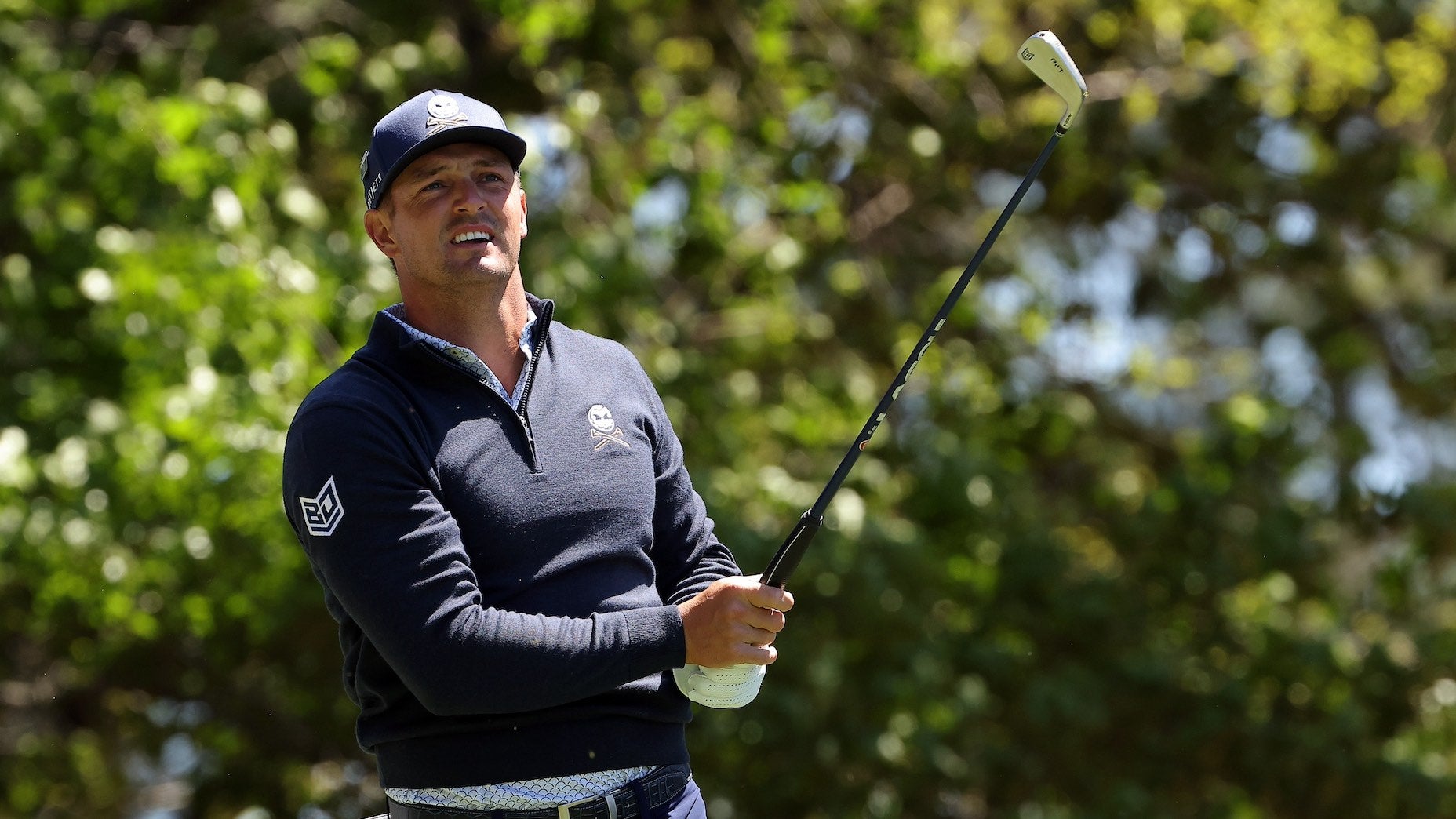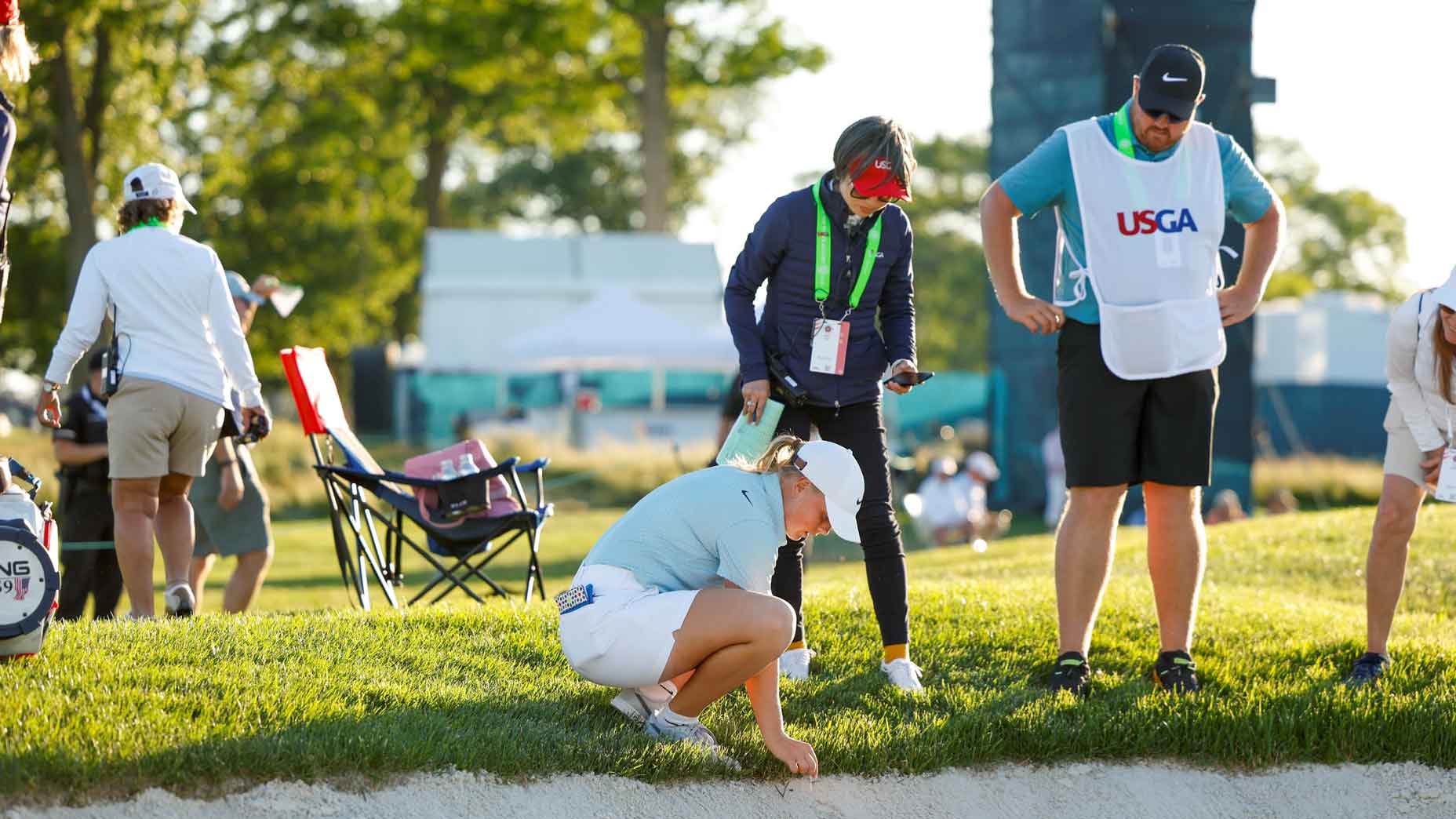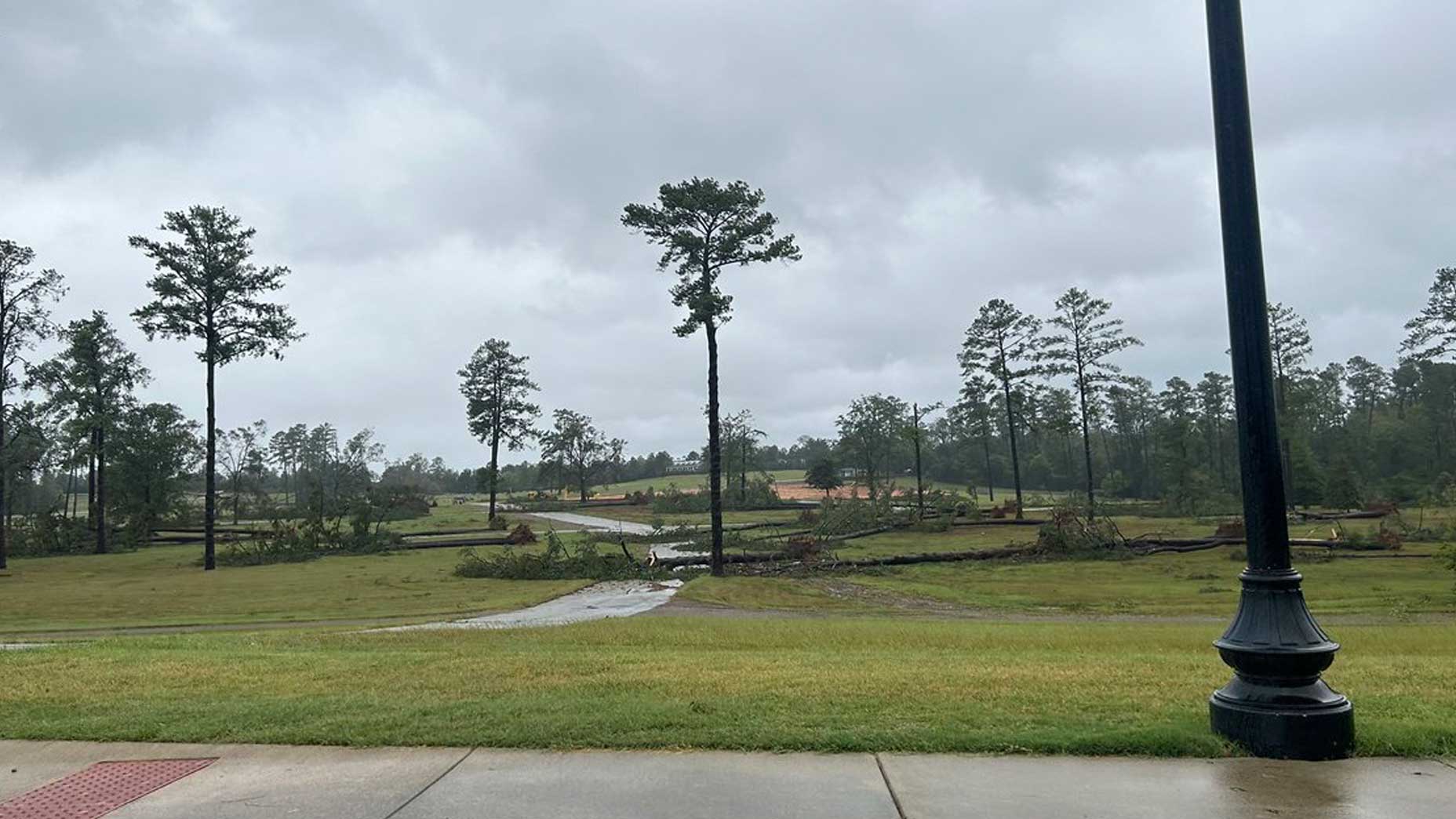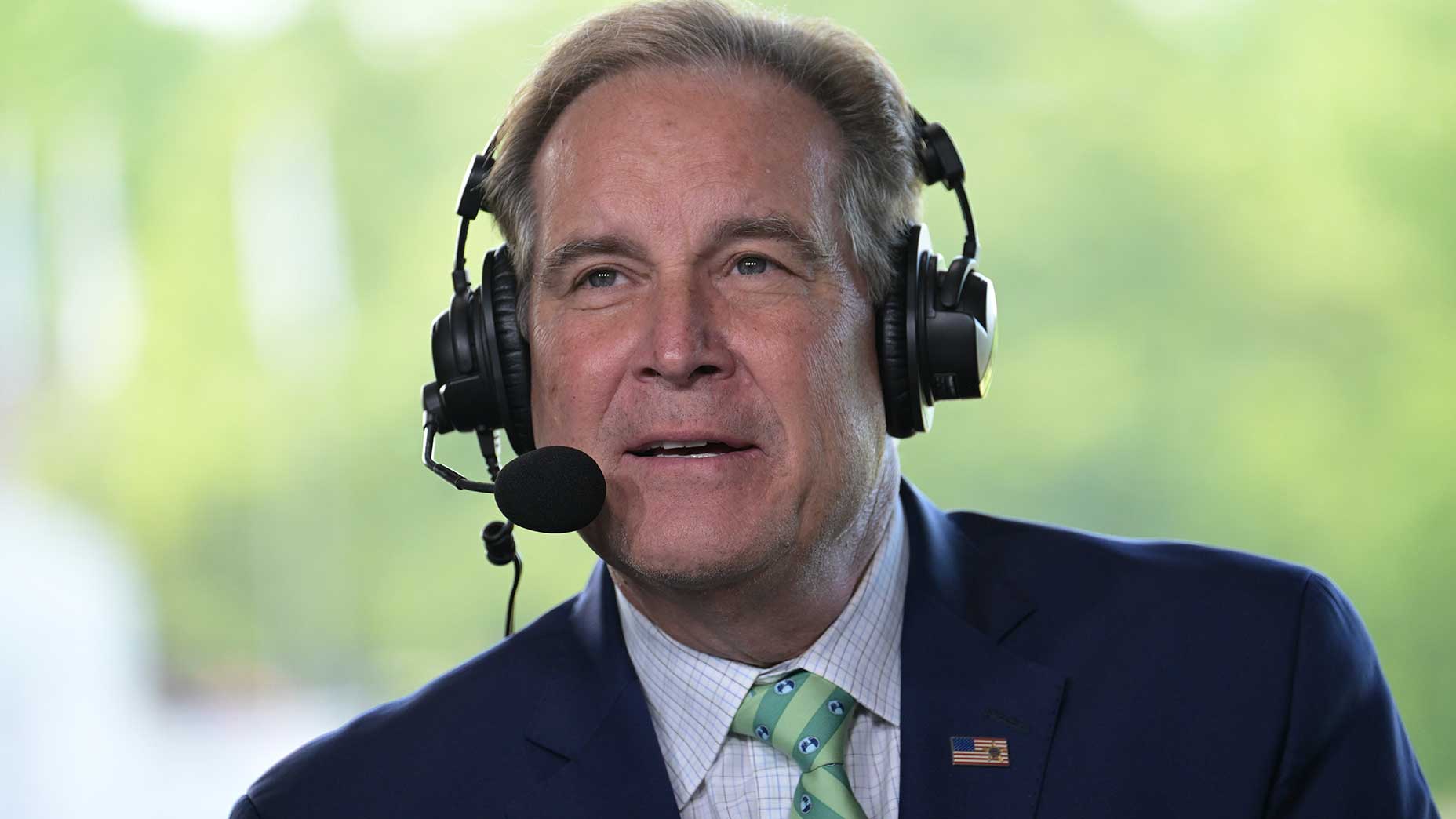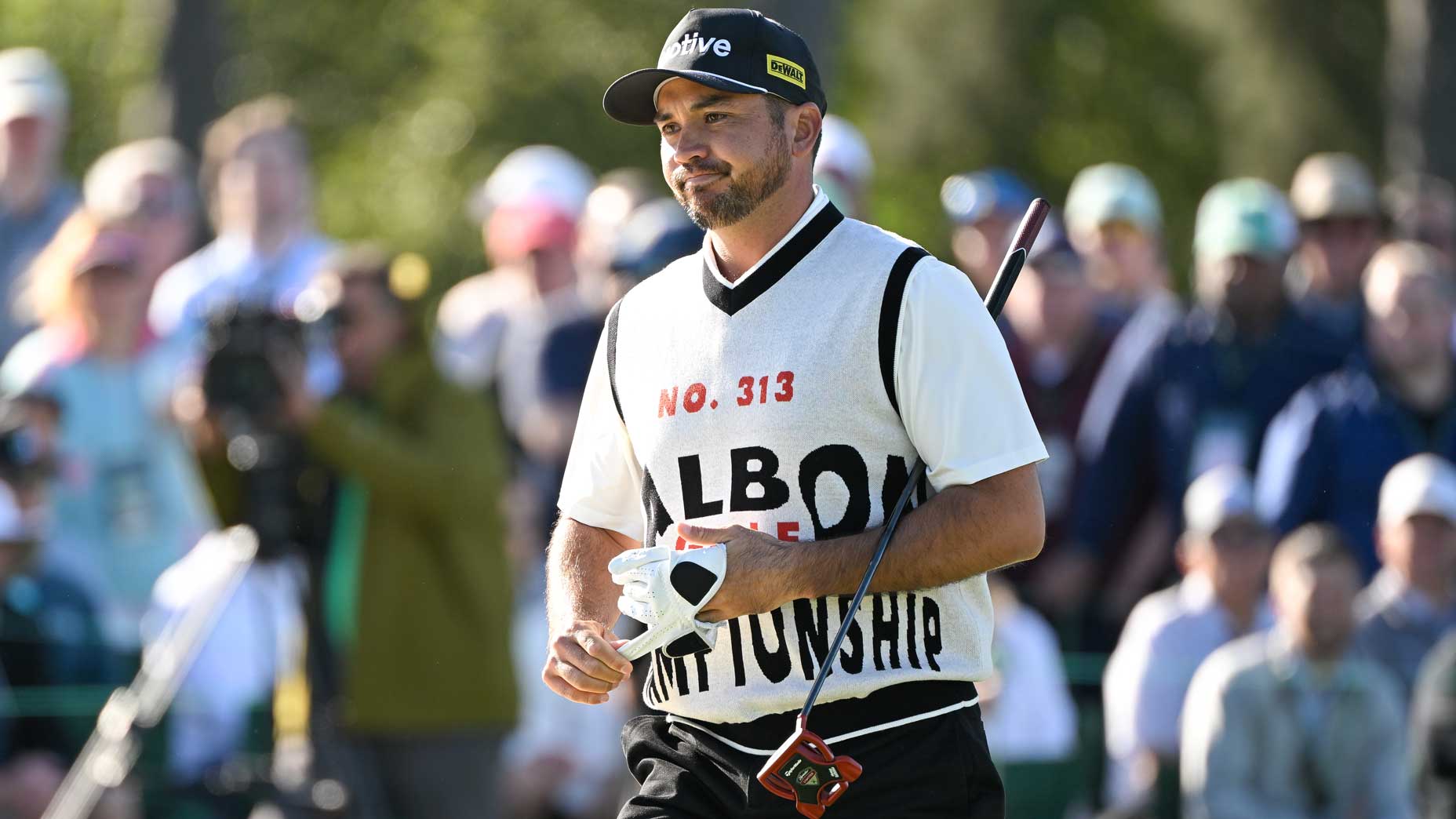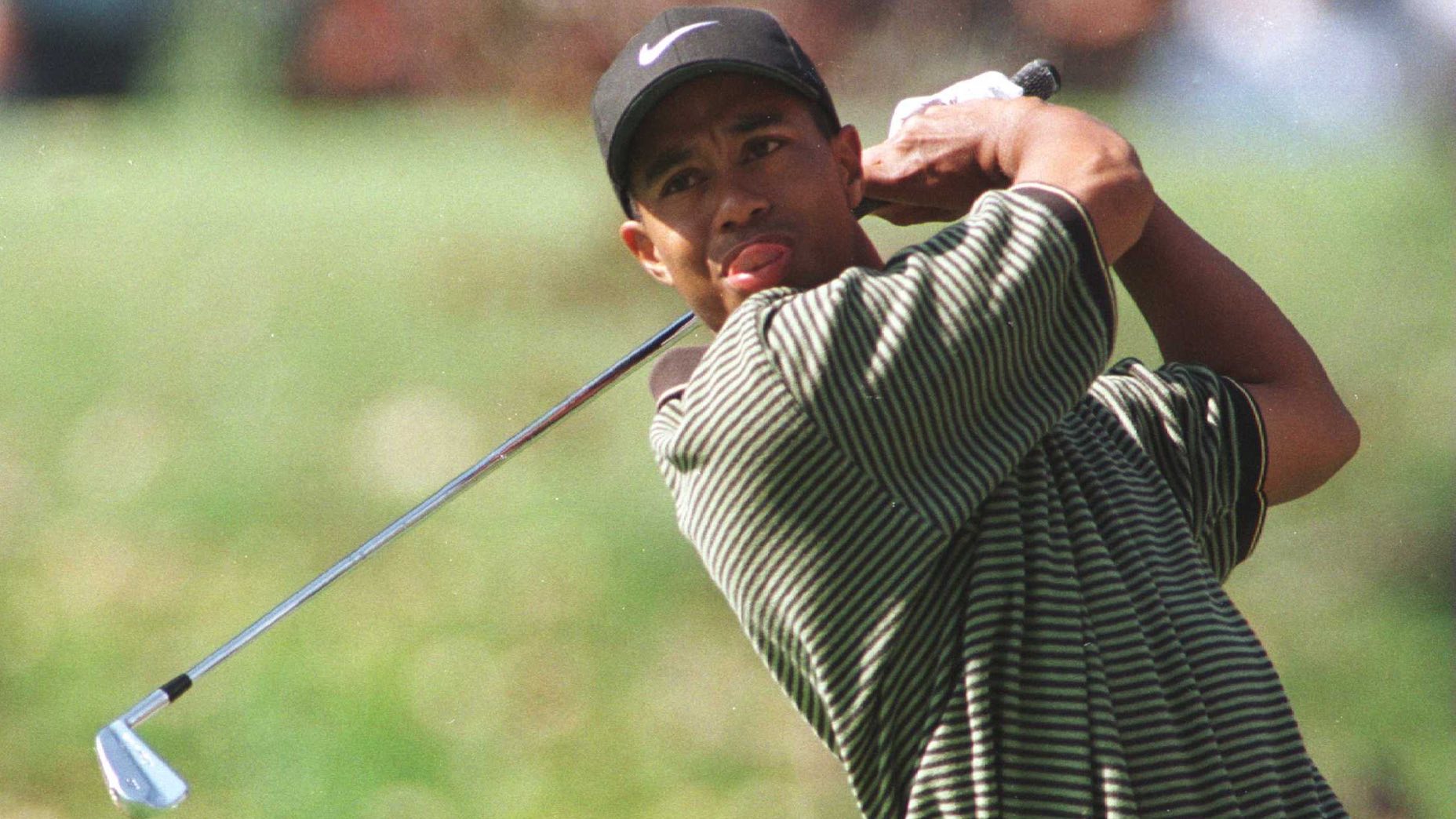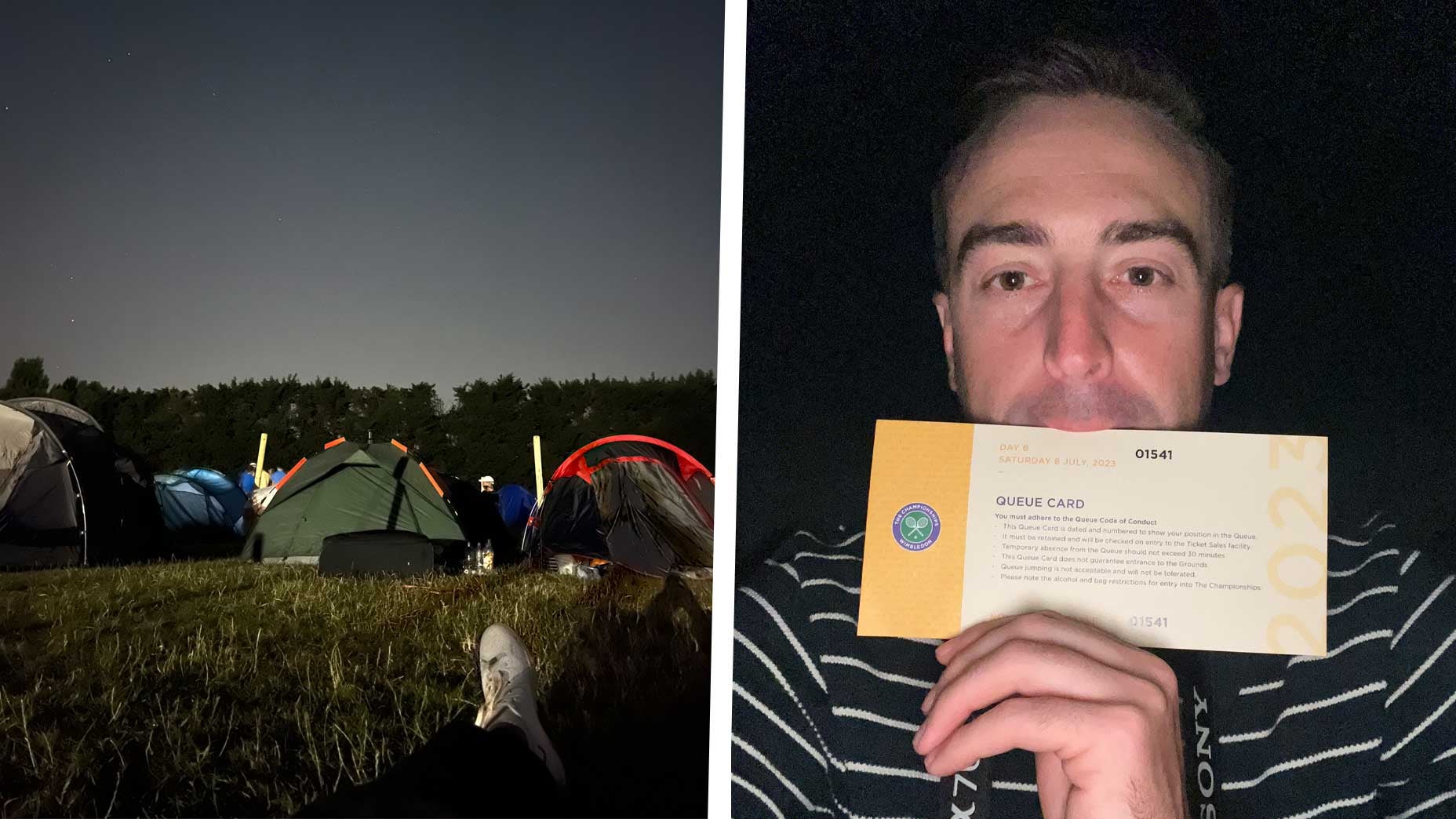Why the rules permitted Bryson DeChambeau to move that Masters sign
- Share on Facebook
- Share on Twitter
- Share by Email

On the 13th hole on Friday at the Masters, DeChambeau did some extra lifting
Getty Images
In his rise through the elite levels of the game, Bryson DeChambeau has broken so many conventions that it’s not a shock to see him play outside the lines.
On Friday afternoon at the Masters, though, some viewers might have wondered if DeChambeau had played outside the rules, or at least brushed up hard against them.
The incident happened on the par-5 13th hole, during a wind-whipped second round at Augusta National, where DeChambeau flared his drive into the pine trees on the right. The right side is a fairly common miss off the tee on 13. Most players simply punch back out onto fairway, positioning themselves for a third shot to the green.
But DeChambeau is not most players.
Surveying his options, the man known for pushing boundaries on everything from equipment to course strategy, settled on a different route, opting to play his second shot up the adjacent 14th fairway. There was just one catch. A sign stood in his path, one of many multidirectional markers at Augusta that help guide patrons around the grounds.
DeChambeau’s solution? Taking matters into his own hands, he moved the sign himself, lifting it from the ground and slinging it over his shoulder like a lumberjack hauling a fallen pine.
“Is this Paul Bunyan or Bryson DeChambeau,” Jim Nantz quipped from the CBS broadcast tower. In his post-round presser, DeChambeau, too, joked about the maneuver.
“Yeah, I picked up the signpost,” he said, chuckling. “I was trying to direct people. Trying to get people to go to the restrooms or . . . I don’t know.”
Seriously, though, should that have been permitted?
Guidance on this matter comes from Rule 15.2, which covers relief from movable obstructions. Under its provisions, a player may, without penalty, “remove a movable obstruction anywhere on or off the course and may do so in any way,” such as using a hand or foot, a club or other equipment, or with help from others.
But what qualifies as a movable obstruction? That’s where things get interesting. The Rules of Golf define movable obstructions as “artificial objects that can be moved with reasonable effort such as a water bottle, scorecard, broken tee, trash can, bench, etc.”
Note those words. Reasonable effort. That’s a standard open to interpretation, which is why questions around relief from movable objects tend to be handled on a case-by-case by basis. And why observers might have been perplexed that DeChambeau took it upon himself to move the sign without consulting with tournament officials.
Bryson DeChambeau’s special irons almost didn’t make it to the MastersBy: Jonathan Wall
For many fans, Friday’s sign-moving at Augusta may have conjured memories of a controversial incident 25 years ago at the Waste Management Open, in Arizona, where Tiger Woods was permitted to enlist the help of spectators to move a boulder in his path. At the time, Tour legend and CBS lead analyst Ken Venturi was among those who criticized the ruling, saying it gave Woods an unfair advantage. But the decision aligned with the broad strokes of the rules, and though it involved a natural object, or “loose impediment” (which are covered by similar by not identical relief guidelines as “movable objects”), it underscored a more general truth: When it comes to deciding what qualifies as a movable obstruction, tournament committees have some latitude. The definition of “reasonable effort” isn’t set in stone.
Do Masters officials regard those multidirectional signs as objects that can be moved with a reasonable effort? Presumably so, because DeChambeau was not penalized. (A Masters spokesperson did not respond to an email inquiry from GOLF.com seeking clarification on the matter.)
Certainly, moving the sign seemed easy enough for DeChambeau. He did it on his own. Moments later, though, he was approached by a volunteer and tournament officials wound up replacing the sign in its original place before DeChambeau hit his second shot.
The adventure wasn’t over.
DeChambeau’s second shot bounded through the 14th fairway and came to rest behind a grandstand. From there, he was granted a free drop for relief from a temporary immovable obstruction (that falls under Model Local Rule F-23, if you’re keeping score at home). He then played a deft third shot to 14 feet and drained the putt for a birdie 4.
No, it wasn’t by the numbers. But, by all appearances, it was by the book.
Latest In Instruction

Josh Sens
Golf.com Editor
A golf, food and travel writer, Josh Sens has been a GOLF Magazine contributor since 2004 and now contributes across all of GOLF’s platforms. His work has been anthologized in The Best American Sportswriting. He is also the co-author, with Sammy Hagar, of Are We Having Any Fun Yet: the Cooking and Partying Handbook.

